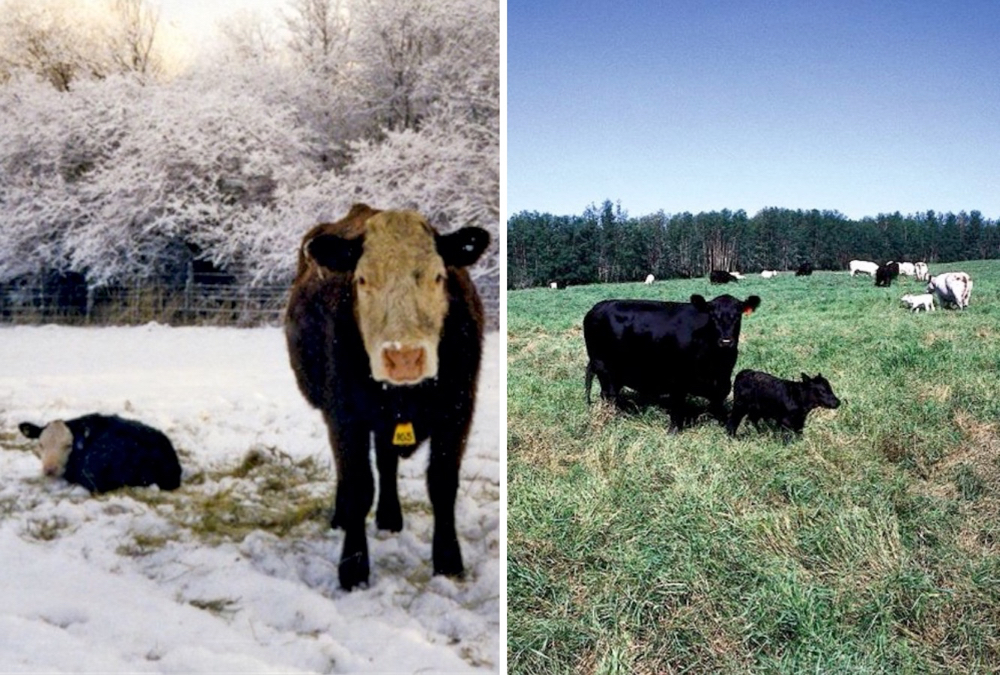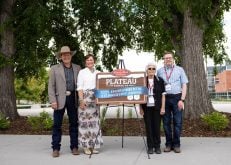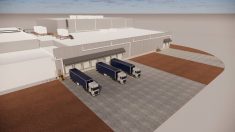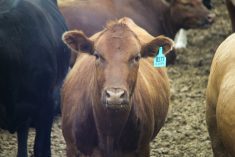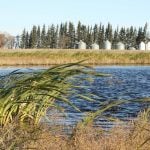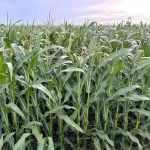Calving season looks different on every operation — there is no one right method or time of year to calve a cow herd.
While more producers in Western Canada have moved to later calving, some have gone the other way. Here are the experiences of three ranching families.
Late summer/fall calving
Taralea Simpson has been calving her Simmental/Angus commercial cow herd in August and September for many years. Growing up, her family calved during January and February.
“I did that for a long time on my own and there was always something going wrong,” said Simpson, adding that scours, frozen ears, and sleep deprivation made for some challenging winter calving seasons.
Read Also
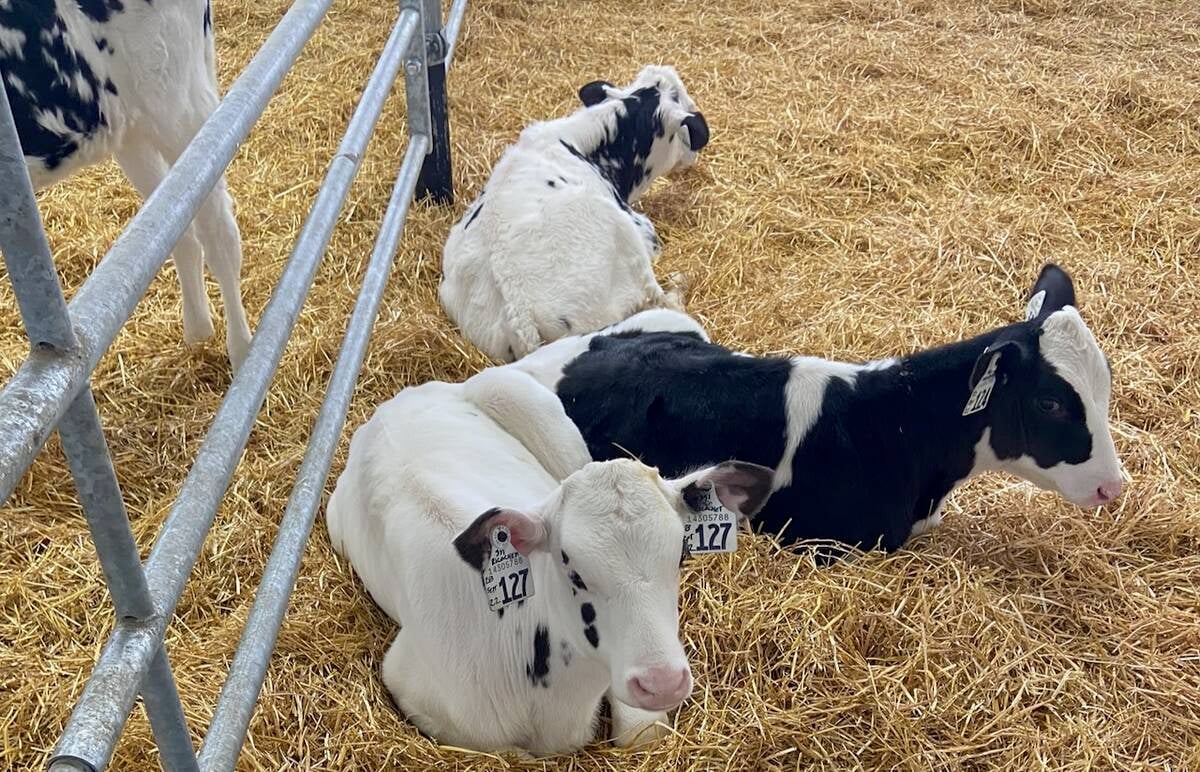
Best tactics for dairy calf diarrhea
Calf diarrhea costs Canada’s dairy farmers big bucks. Fluids, managed antibiotics and treating with anti-inflammatories help animals recover faster.
Her work as an agronomist also played a role.
“I decided to switch to the fall, I’m not as busy with work, I have more time to make sure everyone is doing OK,” said the central Manitoba producer, adding the herd is cleaner and there are fewer health issues.
Simpson’s farm is set up for rotational grazing and her calving pasture is right close at home. She checks calving cows daily to make sure there aren’t any problems but notes that she rarely has issues with dystocia.
“The calves might be a bit smaller but you are kind of selecting for that, you want calving ease on the pasture,” she said.
Catching newborn calves early for processing is key.
“Fall calves tend to be like deer and the cows hide them,” said Simpson. “I try to do my very best to tackle them within the first day or two for castration, sneak up on them when mom’s not around.”
Feed is another consideration.
“Your feed consumption is higher, those calves are 250 pounds right now and in another couple of months they are 350 to 400 pounds and eating a third as much as their mother,” she said. “You do use a lot more hay through winter than those cows that are coasting through the winter and calving in spring.”
Simpson typically weans and ships them directly to market in the first two weeks of May. Conception rates are similar to what they were during earlier calving, however, snowy weather can impact a bull’s ability to breed. When winter hits sooner, the bull is slower to cover cows due to deep snow or slippery footing, which can impact the length of the subsequent calving season. It’s important to supplement during breeding season and make sure the herd is getting adequate minerals and protein, she added.
Late winter/early-spring calving
Randi Wenzel and her family operate a large, mixed commercial cattle and cropping operation in south-central Saskatchewan. They used to calve from mid-March until mid-May or later, but are transitioning to an earlier, more condensed season that starts in February.
“The grain side is getting to be pretty big, I’m trying to move calving up,” said Wenzel, who also works full time as an agrologist. “By taking another 20 days out of our breeding cycle, we can get everything processed, and shipped to pasture by the last week in April.”
Preparation and proper facilities are key when calving in the winter. The family built a calving barn about three years ago and calving cameras (in the barn and pens) have helped save calves.
However, “cameras can’t see everything so we still walk and check areas on foot as well,” she said. They have been continuously improving their calving area, removing old wood corrals and replacing them with heavy-duty portable corral panels and gates.
Heifers are calved out at the same time as the main herd, but they would consider calving heifers a bit earlier. The bulls are turned out approximately 30 days after calves are processed.
They typically wean and sell calves at the beginning of November, again timing those events around harvesting and other fall farm work. They’ve also noticed their calves are bigger now at shipping time than before.
“We’ve changed up our herd sires and are being a little more aggressive on that,” said Wenzel, adding earlier calving is likely a factor as well.
Late spring/early-summer calving
Jason and Karla Hicks and their family operate a large Angus operation in central Saskatchewan. They shifted away from winter calving to a later season (May and June), and maintain a defined breeding season of 60 days.
“Our commercial cows used to calve at the end of March and April, and we always get snow in April and don’t have anywhere to put large numbers, so we went a month later to miss those snowstorms,” said Jason. “There’s less death loss, less work.”
“Calving in summer is easier on the marriage,” Karla added with a laugh.
Summer calving also fits with their stewardship principles.
“Now we calve out on grass, in rolling hills, coulees, trees. It’s set up naturally to be good calving grounds,” said Jason. “I think what we really found was that working with Mother Nature was a bonus.”
The weather can still be unpredictable, however.
“Out in the open, when the heifers are calving, in April you do get a snowstorm,” he said.
While most of their calving pastures have natural shelter, with their first-calvers, they offset the risk of cold or trampled calves by planning ahead and giving the heifers access to pre-existing corrals or facilities if the weather turns bad.
They’ve noticed since their transition they’ve had fewer calving problems.
“There has been natural selection for that over time, for the entire herd,” said Jason.
One downside of pasture calving has been predator attacks. Their ranch is natural terrain for coyotes and cougars, which has resulted in losses in the field and even in their corrals.
“We have a huge coyote population,” said Jason. “Even 15 years ago we had coyotes take down yearlings right in the feedlot.”
After calving, they will brand, castrate, vaccinate and tag calves in four or five branding days in July. Later, they wean calves from mid- to late November.
“Our weaning weights didn’t change that much,” said Karla. “We didn’t change the bulls we bought or the type of cow we had.”
As groups of calves are weaned, they are sorted and backgrounded in order to avoid selling in the fall when the majority of calves hit the marketplace.
The couple adapted and learned along the way as they worked to adjust their calving season to make the best use of their human and natural resources.
“This is what we’ve figured out for us,” said Jason. “It might not work for everyone else, but we just need it to work for us.”
This article has been edited and abridged. The full article can be found at the ‘Blogs’ section at beefresearch.ca.

